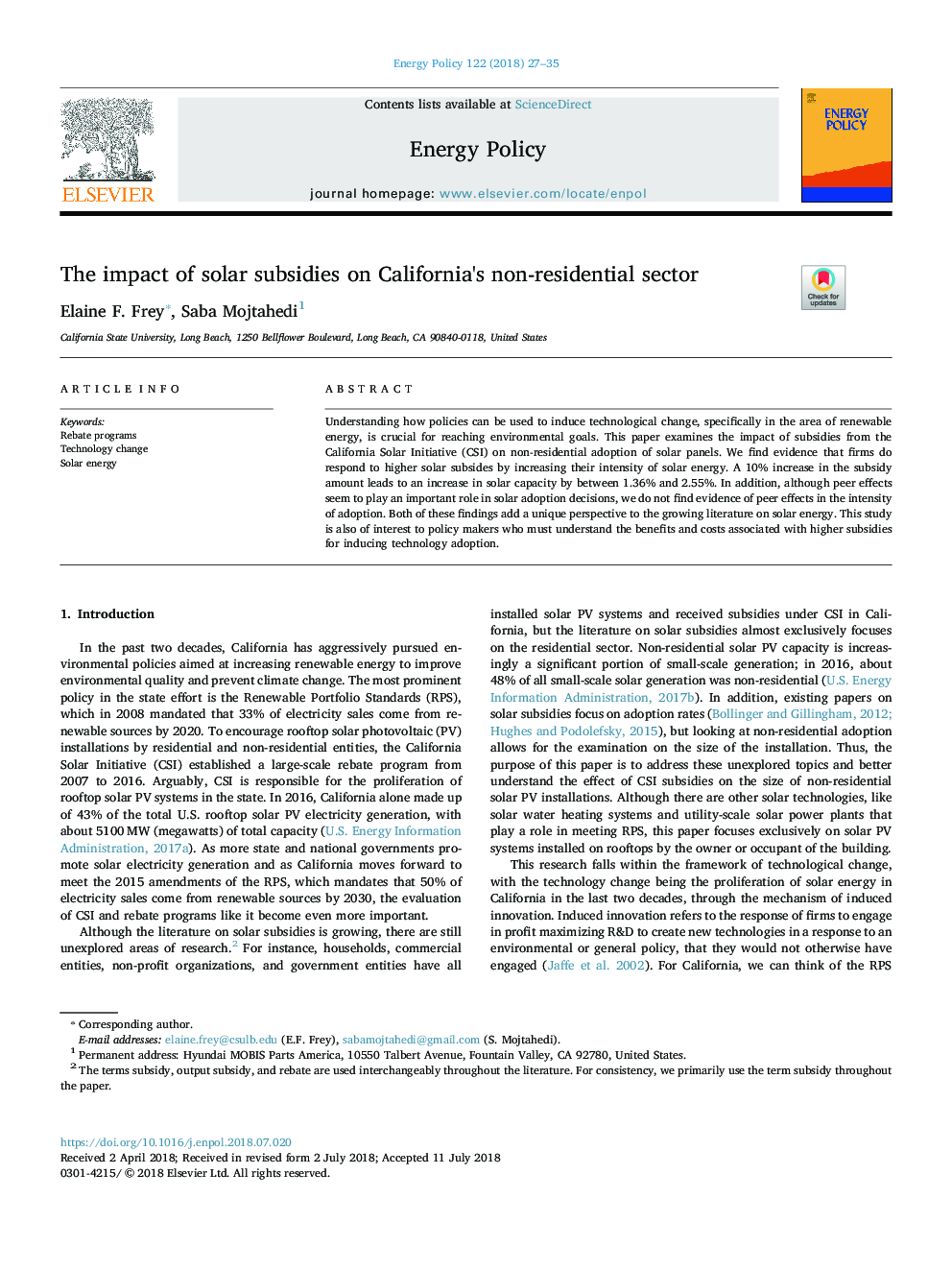| Article ID | Journal | Published Year | Pages | File Type |
|---|---|---|---|---|
| 7396738 | Energy Policy | 2018 | 9 Pages |
Abstract
Understanding how policies can be used to induce technological change, specifically in the area of renewable energy, is crucial for reaching environmental goals. This paper examines the impact of subsidies from the California Solar Initiative (CSI) on non-residential adoption of solar panels. We find evidence that firms do respond to higher solar subsides by increasing their intensity of solar energy. A 10% increase in the subsidy amount leads to an increase in solar capacity by between 1.36% and 2.55%. In addition, although peer effects seem to play an important role in solar adoption decisions, we do not find evidence of peer effects in the intensity of adoption. Both of these findings add a unique perspective to the growing literature on solar energy. This study is also of interest to policy makers who must understand the benefits and costs associated with higher subsidies for inducing technology adoption.
Keywords
Related Topics
Physical Sciences and Engineering
Energy
Energy Engineering and Power Technology
Authors
Elaine F. Frey, Saba Mojtahedi,
